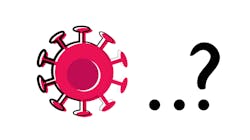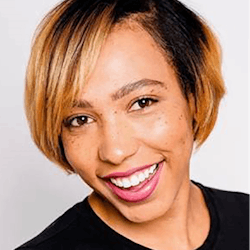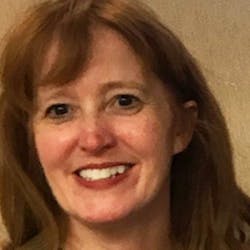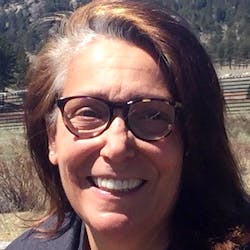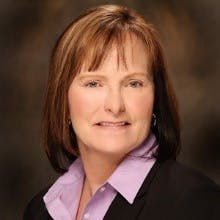A new normal for dental hygienists: Navigating the COVID-19 transition and looking to the future
A roundtable with
Cathy Stano, BS, RDH
Donna Maldonado, BS, RDH
Krystal King, RDH
Linda Hirce, RDH
Stephanie Bossenberger, MS, RDH
Dental hygienists are known for their confidence, problem-solving skills, and optimism, but right now, these attributes may be temporarily lost and replaced with fear, uncertainty, and discouragement—and it is perfectly OK. Hygienists are also passionate, strong, and focused, and that is what will ultimately help lead us through these tumultuous times and back to work.
By sharing a real conversation between five dental professionals with unique backgrounds, we hope to provide hygienists with honest information and encouragement to help navigate the COVID-19 transition.
Linda: Visual Capitalist published research on COVID-19 occupational risk, showing the dental hygienist ranking the highest with an alarming score of 99.7%.1 What is your reaction, and what are some of your real fears and concerns for hygienists returning to work?
Linda: The Centers for Disease Control and Prevention (CDC) says SARS-CoV-2 can survive in aerosols for hours and on some surfaces for days. As hygienists we use ultrasonic scalers, air/water syringes, and other tools that can create spray that contains aerosol.2 What are our options to ensure the safety of us and patients given this risk?
Cathy: Many states have elected return to work orders coming into effect soon, so it is important we stay on top of our state mandates. With respect to the CDC, they have been around for over 70 years. In the 1980s, they developed universal precautions for healthcare workers as a result of bloodborne pathogens that were devastating and deadly at the time. Now we have this new disease outbreak and the CDC is basically rewriting the book on protocol. A key issue to study will be the aerosolization and that will help us modify our practice settings. It will just take time.
Linda: Part of this “new normal” at work will be adopting strict PPE protocol. Although the Occupational Safety and Health Administration (OSHA) says employers are obligated to provide their workers with PPE needed to keep them safe while performing their jobs,3 some practices may not follow this directive. What PPE should hygienists ask for, and how can they become empowered to stand up and do the right thing?
Cathy: It will vary, but I think hygienists must be equipped with the most current knowledge from our professional resources, including the CDC, OSHA,Krystal: Right before the pandemic hit us, my employer only had Level 1 masks. Having the facts, I knew I needed at least a Level 3 mask working in a periodontics office. I am not sure what another hygienist would have done in that situation, but I took a stand for myself and requested the PPE I felt I needed. Like Cathy said, having the appropriate information will help you know what to ask for to keep you and your patients safe.
Linda: In a recent survey, over 100 dental professionals were asked if they will change practice operations as a result of the pandemic, with 75% saying “yes.”4 Continuing the discussion on PPE and infection control, what are your thoughts on current prevention methods to keep our working environments as safe and sterile as possible?
Donna: When we return, we will screen by phone and then take patients’ temperatures when they come in. Before treatment, we will do a prerinse. Everyone knows rinses have been around for a long time, but now we will be using solutions that are 1.5% hydrogen peroxide to help with virus prevention.
Cathy: The whole practice will have to get involved to implement these changes. From the staff members who greet patients at the door, to the dentists and dental assistants, to the lab and sterilization crews, it will need to be a 110% team effort. Since hygienists are educators by nature, we can step in and take the initiative to encourage everyone.
Linda: To prepare our profession for the future, we need to ensure hygienists are educated on public health crises. What is the current curriculum in dental hygiene programs now, and how might it change moving forward?
Stephanie: With public health and dental hygiene education, we always talk about reaching people where they are. Prior to COVID-19, we would not wear our PPE with the public unless we were doing intraoral exams and needed gloves and masks. Moving forward, that will change because of risk of contact with the virus. Now, whether we meet with children in a public health-care setting or see elderly patients in nursing homes, everyone including hygienists, will be screened.
The education students receive on PPE will become stringent and enhanced, and the planning of a public health event will be rigid to ensure the safety of the patient and the hygienist. In addition to the curriculum changing will come more costs for grant writing, program support, and PPE in general, as well as more planning overall. However, we can’t become fearful of public health. These programs are our way of reaching the people who are underserved and unable to come into dental offices for various reasons. We need to continue to reach and support these individuals while doing it in the safest way possible.
Linda: Hygienists are giving and caring, and we love our profession and patients. With practices closed, many of us are fearful and feel lost without that sense of purpose. What would you say to a hygienist about not giving up, and what are your thoughts on exploring new paths to broaden our capabilities should something like this affect us again?
Stephanie: If it is not the hygienist reaching out to offer care and treatment to patients, who will? Instead of being fearful, we should focus on managing and solving the problem.
Donna: I remember meeting a speech pathologist in a hospital who expressed interest in having a hygienist on staff to help with patients’ oral care adversities, including dry mouth. Aside from clinical practice, education and sales, I could see there being other avenues for hygienists in the future if there are not already.
Krystal: In our profession we must be innovative thinkers and educators, especially in the times we are living in now. Some hygienists may want to consider stepping into the research field to not only understand better ways to treat patients and protect ourselves, but to also help propel the dental hygiene profession forward.
Cathy: What we are doing here to circulate real information is perfect! Hygienists should be encouraged to have good and healthy discussions with peers, because that could help alleviate some of the fear.
Linda: To help hygienists understand their value, and their role in the recovery phase and beyond, what is your message to them right now?
As hygienists enter the COVID-19 recovery phase, we will all have to figure out what this “new normal” represents for us individually. Understanding the magnitude of the pandemic and its effect on the dental hygiene profession, this conversation just scratches the surface, and we know there will be many more to come. But for now, here is some advice to take back to work: educate yourself; don’t be afraid to take a stand for the safety of you and your patients; remember that adapting and overcoming requires a team effort and most importantly, your role as a hygiene professional is more essential than ever.
References
1. Lu M. The Front Line: Visualizing the Occupations with the Highest COVID-19 Risk. Visual Capitalist. Published April 15, 2020. Accessed May 13, 2020. https://www.visualcapitalist.com/the-front-line-visualizing-the-occupations-with-the-highest-covid-19-risk/
2. Guidance for dental settings. Centers for Disease Control and Prevention. Published May 3, 2020. Accessed May 13, 2020. https://www.cdc.gov/coronavirus/2019-ncov/hcp/dental-settings.html
3. Guidance on preparing workplaces for COVID-19. Occupational Safety and Health Administration. Accessed May 13, 2020. https://www.osha.gov/Publications/OSHA3990.pdf
4. Data on file
Cathy Stano, BS, RDH, graduated with her AAS degree in dental hygiene from the Community College of New York and received her BS degree in Dental Health Education from New York University. She has had a diverse career in dental hygiene, including working as the sole hygienist at New York City’s Lenox Hill Hospital.
Donna Maldonado, BS, RDH, has been a practicing dental hygienist for the past 27 years. She currently works at two different general dentist offices in the suburbs of Chicago, Illinois.
Krystal King, RDH, graduated with her BS in Dental Hygiene from the University of Oklahoma Health Sciences Center. She values ethical dentistry and believes oral hygiene education can lead to healthier lives.
Linda Hirce, RDH, is a graduate of the University of Pennsylvania School of Oral Hygiene. She has been active in the Colorado Dental Hygienists’ Association leadership and laser instruction with Advanced Dental Hygiene.
Stephanie Bossenberger, MS, RDH, is an emeritus professor of Weber State University. She has over 40 years’ experience in teaching dental hygiene, clinical practice and interdisciplinary healthcare education and practices.
